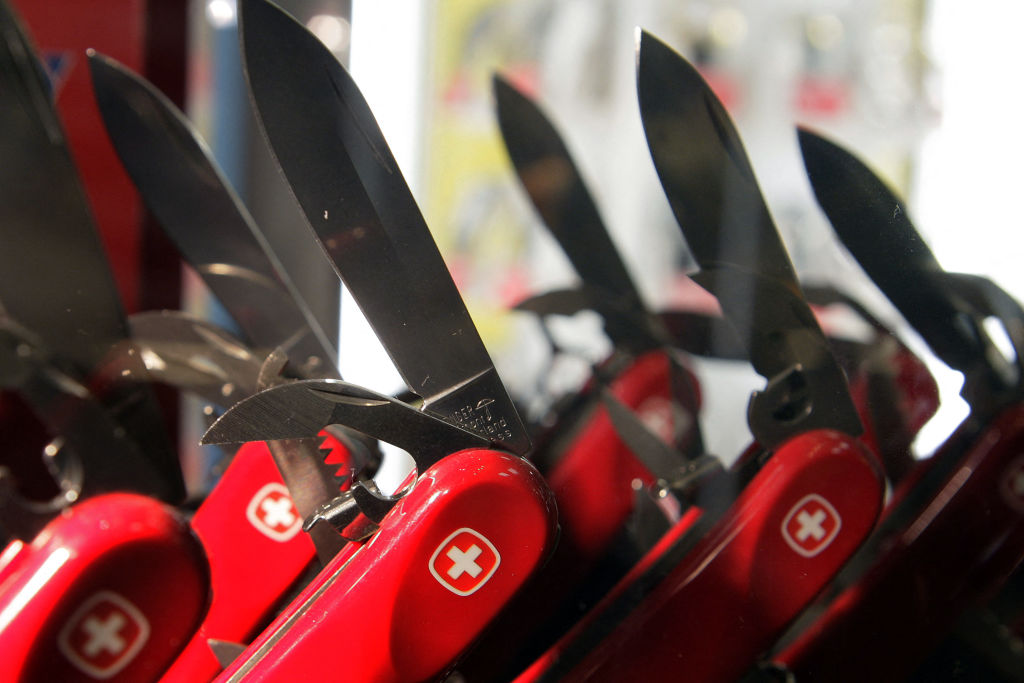In May, Carl Elsener of Victorinox, makers of the Swiss Army knife (all other manufacturers must refer to their products as “Swiss-style knives”), announced that the company is working to develop a version without any blades in anticipation of modern legislation and safety-conscious consumers. A cutting-edge Swiss Army knife will no longer have a cutting edge.
I’m glad this proposal didn’t come out before Christmas: 2023 was the year my wife finally agreed our son could have a knife of his own. She has friends who won’t let their children wash kitchen knives in case they injure themselves, but let them watch YouTube unsupervised. My son and I were firmly of the view that all small boys should have a Swiss Army knife — as advised in paragraph one of The Dangerous Book for Boys, where it tops the list of “Essential Kit,” above even a really good marble or a pencil and paper to write down the car numbers of criminals. Apart from the Swiss flag, which is a big plus, you never know when you might need to loosen a screw or open a wine bottle. The only thing he has yet to find a single purpose for is the “multipurpose hook” on the back — most guides to the knife suggest it can be used to carry packages tied up with string, but they’re not one of his favorite things. He is saving the fish-scaling tool until Halloween, as he’s heard that it’s perfect for carving pumpkins. The Swiss Army has always been confident of victory — when the Kaiser asked what its 250,000 soldiers could do if Germany invaded with an army of half a million, a member of the militia replied, “Shoot twice, then go home” — but including a corkscrew in their standard kit always seemed slightly cocky. In fact, this was only part of the officers’ version, the Schweizer Offiziersmesser invented by Carl Elsener’s great-grandfather, which the GIs buying them as souvenirs for the folks back home couldn’t pronounce and renamed the Swiss Army knife. Billy Connolly may have always wanted to visit Switzerland, just to see what the army does with those wee red knives, but the original version did actually serve a military purpose. The service rifle used at the time, the Schmidt-Rubin, had screws that needed to be undone to strip and oil them, and soldiers’ rations came in cans. The original army-issue pocket knife had a screwdriver, can opener and reamer, with grips made from oak — and a blade.
The fact that the blade folds makes it practically useless as a weapon: if you tried to stab anyone with it, you’d do more damage to yourself than your opponent when it snapped shut on your fingers. According to American survivalist websites — which, possibly due to the influence of the TV series MacGyver (where it was the hero’s tool of choice), devote a lot of discussion to what they call “SAKs” — the only way to use them in self-defense is by deploying the awl as a makeshift shiv.
Recruits to the Swiss Army still receive a Swiss Army knife after basic training — but, after previous models failed health and safety standards, a new version was designed in 2008. It’s as much a rite of passage for them as it is for proper small boys elsewhere. Have you ever cut yourself with it, I asked my son. (My wife thought the possibility that he might do so if he wasn’t careful was a bug, not a feature.) Oh yes, he said. But not since the day after Christmas.
This article was originally published in The Spectator’s July 2024 World edition.


























Leave a Reply